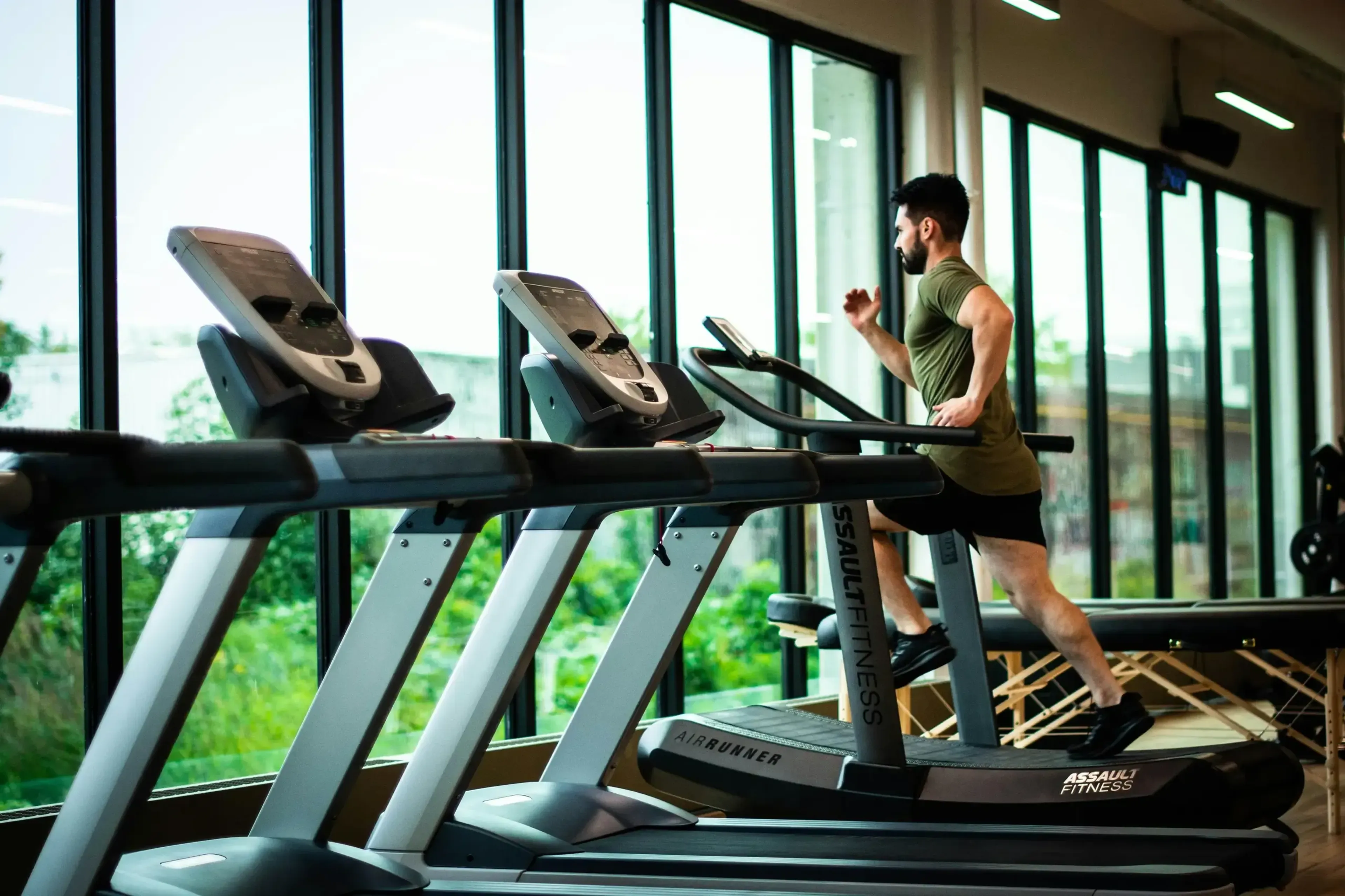A frequently asked question is, "What is the best time to workout?" While a simple answer might be "whenever you can maintain consistency," the timing of your workout can significantly impact performance, hormone levels, energy, and results. Factors like your natural body clock, fitness goals, and daily routine play a role in determining the ideal time. This guide provides insights into the benefits and drawbacks of various workout times, from morning sessions that enhance discipline to evening workouts that suit peak performance. By understanding these factors, you can strategically choose a workout time that best fits your body and lifestyle, optimizing your fitness routine.
1. Early Morning Workouts (5-7 AM)
Exercising between 5 AM and 7 AM can be advantageous due to the body's natural hormonal state. During these hours, cortisol and growth hormone levels peak, aiding in fat metabolism and muscle building. Aligning workouts with this hormonal surge may enhance fat loss and muscle repair, making early morning an effective time for those focused on body composition goals.
How to Make Early Mornings Work
Transitioning to a pre-dawn fitness routine requires preparation and consistency. The key isn't just waking up early; it's about setting yourself up for success the night before.
- Prioritize Sleep: Ensure 7-8 hours of sleep for energy and recovery.
- Warm-Up Thoroughly: Spend 5-10 extra minutes on stretching and light cardio to boost blood flow and avoid injury.
- Start Gradually: Adjust your wake-up and workout times earlier by 15 minutes each week.
2. Late Morning Workouts (10 AM - 12 PM)
Exercising between 10 AM and 12 PM is optimal for performance, as it coincides with increased body temperature and alertness. This period, favored by professional athletes and CrossFit, offers pliable muscles, efficient reaction time, and peak strength and endurance, making it ideal for strength gains and high-intensity training.
How to Make Late Mornings Work
Maximizing this prime-time workout window is about smart scheduling and proper fueling. Unlike the pre-dawn rush, you have time to prepare your body both nutritionally and mentally for the demands of a tough session.
- Strategic Fueling: Consume a carbohydrate and protein-rich breakfast 2-3 hours before exercising to boost energy levels.
- Demanding Workouts: Use this period for challenging sessions like heavy lifting or complex skills to optimize performance.
- Smart Hydration: Drink water steadily throughout the morning to maintain hydration without discomfort.
3. Early Evening Workouts (4-6 PM)
Exercising between 4 PM and 6 PM coincides with your body's peak physiological performance. During this time, your core body temperature is highest, leading to increased muscle flexibility, faster nerve transmissions, and improved enzyme activity. These factors enhance strength, power, and endurance. Research indicates that perceived exertion is often lowest in the late afternoon, allowing for more intense workouts with less effort, making it an optimal time for achieving personal records.
How to Make Early Evenings Work
To maximize your performance during peak times, smart planning is essential:
- Plan for Crowds: Gyms are busiest then. Book ahead or have an alternative routine with less popular equipment.
- Fuel Strategically: Eat a light snack with carbs and some protein 1-2 hours before your workout for energy.
- Protect Your Sleep: Avoid intense exercise close to bedtime; finish workouts 3-4 hours before sleeping.
- Schedule Hard Sessions: Use this time for demanding workouts like heavy lifting or HIIT.
By aligning your workouts with your body's peak, you can enhance strength, speed, and endurance, benefiting performance-focused athletes and those seeking to overcome fitness plateaus.
4. Lunch Break Workouts (12-1 PM)

Squeezing a workout into your lunch break can boost productivity by providing a needed midday reset. Companies like Google and Nike endorse this approach to counter the afternoon slump. It efficiently breaks a sedentary day without cutting into personal evening time. Midday workouts are ideal as your core temperature is higher, reducing injury risk, and you've had meals to fuel your session. Thus, the lunch hour might be the best time to workout if you face morning grogginess or evening fatigue.
How to Make Lunch Break Workouts Work
Successfully adding a workout to your workday requires careful planning. Aim to maximize your time without affecting your job duties.
- Efficiency: Opt for HIIT or compound exercises like squats and presses, which target multiple muscles in 30-45 minutes.
- Fuel Planning: Have a light snack with carbs 60-90 minutes before exercising. Eat a larger meal after cooling down to prevent sluggishness.
- Activity Selection: Choose workouts needing minimal setup. Quick options include on-site gym sessions, brisk runs, or bodyweight circuits in a nearby park.
These strategies help you use your lunch break to boost energy, maintain focus, and keep your evenings free.
5. Consistency Over Timing
While specific times of day have various physiological benefits, consistency is key in fitness. The best time to workout isn't just about circadian rhythms, but when you can commit daily. Exercising consistently trains your body and mind, adapting internal clocks to optimize energy and motivation. This routine makes workouts feel easier, increasing adherence, and studies show consistent timing boosts long-term commitment to fitness programs.
How to Make Consistency Work
Creating a lasting workout habit involves minimizing obstacles and making the routine automatic. It's about establishing a system rather than relying on motivation.
- Select an Anchor Time: Choose a time with minimal disruptions, like after school drop-off or between classes. It should be a time you can consistently protect.
- Schedule It: Treat your workout as a fixed appointment. Block it in your calendar and set reminders to emphasize its importance.
- Begin Small: Start with 15-20 minutes to establish the habit of showing up. You can increase time and intensity later.
- Prepare in Advance: Have your gear ready to eliminate small hurdles and maintain momentum.
This approach focuses on sustainable habits rather than short-term gains. For more on building this foundation, check our guide on how to start working out.
6. Match Your Chronotype
Aligning your workout with your body's natural clock, known as your chronotype, can improve energy and results. Research suggests that your peak performance time is influenced by whether you're a "morning lark," "night owl," or in between. Your chronotype affects alertness, body temperature, and hormone levels, indicating that a universal workout schedule isn't optimal. Understanding this can help elite athletes and shift workers enhance their training and reduce fatigue.
How to Make Your Chronotype Work
Identifying your chronotype involves self-observation to find your peak energy times.
- Track Energy: Record your energy levels (1-10) every few hours for 1-2 weeks to discover your natural highs and lows.
- Observe Sleep: On a free day, note when you naturally sleep and wake without an alarm to understand your body's schedule.
- Test Timings: Use your energy log to try different workout times. If you feel alert in the afternoon, exercise then and assess how it feels.
- Start Simple: Once you know your ideal time, establish a routine. Beginners can start with basic exercises for beginners to evaluate performance.
Aligning your workout with your internal clock respects your body's natural rhythms, offering a personalized approach to enhance your fitness and well-being.
Your Perfect Time: The Final Verdict on Workout Scheduling
After exploring the unique advantages of morning, midday, and evening workouts, the search for the single best time to workout leads to a surprisingly simple conclusion: the best time is the time that you can consistently commit to. While scientific evidence points to late afternoon for peak physiological performance, the practical realities of life, work, and personal energy cycles often dictate a different path. The most powerful takeaway from this guide is not a specific hour on the clock, but the principle of unwavering consistency.
A "good enough" workout performed five times a week will always yield superior results compared to a theoretically "perfect" workout that only happens sporadically. Your mission now is to move from theory to practice. Use the information we've covered as a strategic toolkit, not a rigid set of rules, to discover your personal fitness prime time.

